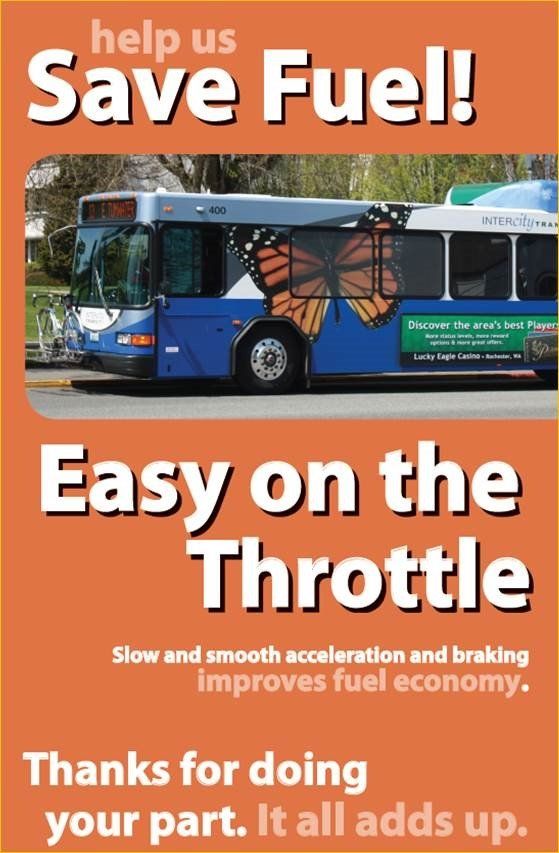More and more transit agencies are looking to maximize fuel efficiency and reduce costs, and they're not the only ones: in February 2015 the Federal Transit Administration announced that it would spend more than $55 million on research and development of new technologies that would improve fuel efficiency in transit vehicles. This money will mostly be going to projects that will develop and deploy low emission and zero-emission buses, including battery-electric and hydrogen-electric models.
Zero-emission buses and hybrid vehicles may be more advanced solutions than most transit agencies are looking for, but there are many small ways that agencies can have drivers cut fuel costs, too. The most obvious ones are probably already in use at many agencies:
- administering proper tire maintenance,
- following the speed limit,
- stopping any unnecessary idling of vehicles, and
- avoiding sharp braking and accelerating.
Maintain Proper Tire Inflation:
Maintaining proper tire inflation pressure helps cut fuel costs as well as maintenance costs since the tires will wear less and won't need to be replaced as often. This also helps vehicles stay up and running without maintenance downtime. Best of all, maintaining proper tire pressure takes very little time or effort.
Follow Speed Limit:
Different vehicles reach their optimal fuel economy at different speeds, but the general rule of thumb is that fuel efficiency decreases above 50 mph. Observing the speed limit, according to the Environmental Protection Agency (EPA), can give a fuel economy benefit of 7% – 14%. It also has the added benefit of promoting safer, more aware driving.
Minimize Idling:
About one-third to over one-half of bus drivers surveyed in the University of Chicago Research has indicated that about one-third to over one-half of bus drivers leave their bus idling. Idling vehicles cause pollution, wastes fuel, and can cause excessive engine wear. Some states, such as Massachusetts, have laws prohibiting the idling of any motor vehicle for anything other than short periods of time (usually five minutes or less.) Argonne National Laboratory research has shown that idling uses more fuel than starting the vehicle again, and idling wastes between 0.3 and 1 gallon per hour depending on the size of the vehicle.
Avoid Aggressive Driving:
Aggressive driving can lead to some of the most inefficient fuel use in transit vehicles. The EPA estimates that rapid acceleration and braking can lower your gas mileage by up to 33% on the highway – or 5%when not on the highway.
One way to combat aggressive driving techniques is to use a driver feedback device such as GreenRoad or the SmartDrive Fuel program. Driver feedback devices give real-time feedback and alerts to drivers when they speed, quickly accelerate or brake, perform hard turns, and idle, among other things. They also monitor fuel consumption and efficiency and can produce reports that highlight trouble areas for individual drivers. These devices can be expensive, but they have the benefit of giving customized feedback over the short- and long-term, so drivers can see the results of their actions as they change their driving habits.



